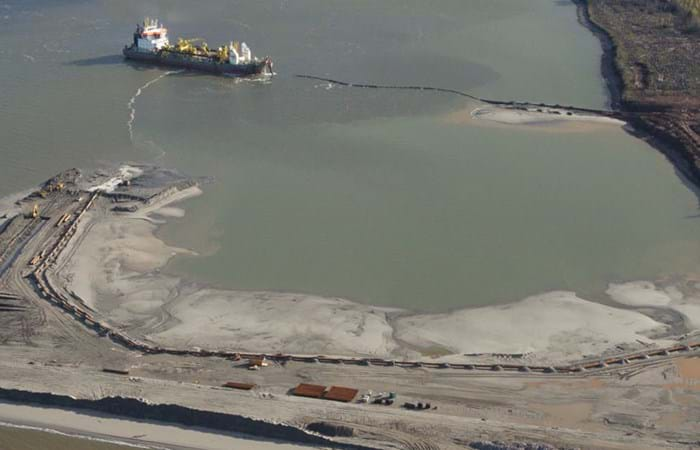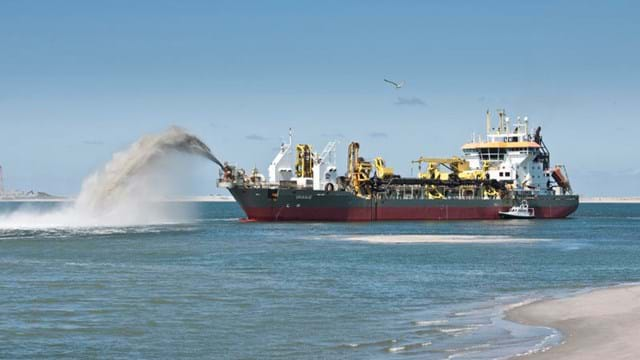The 'Sydney Harbor Channel Dredging Project' in Nova Scotia, Canada, involved dredging and reclamation work as part of the construction of the new Sydney Port container terminal located on the northeast coast of Canada. Once operational, Sydney Port will be the most northerly deepwater container terminal on the North American east coast.
The project required the creation of a 12km access channel, for which approximately 4 million m3 of sand and silt was dredged. This material was then taken to a confined disposal facility (CDF) forming the foundation of the future terminal. The CDF was constructed by Boskalis and engineered by Hydronamic, the Boskalis engineering consultancy.
Project specification
- Detailed design of CDF
- Debris and wreck removal in access channel, construction of CDF, including the installation of 80,000 t of filter material (10 - 100 kg rocks)
- and 130,000 t of armor rock (0.1 - 3 t rocks)
- Deepening of existing natural harbor:
- dredging 3.3 million m3 of sand and gravel and 0.9 million m3 of mud
- Disposal of dredged material in CDF
- Execution of environmental monitoring and other environmental control measures.

